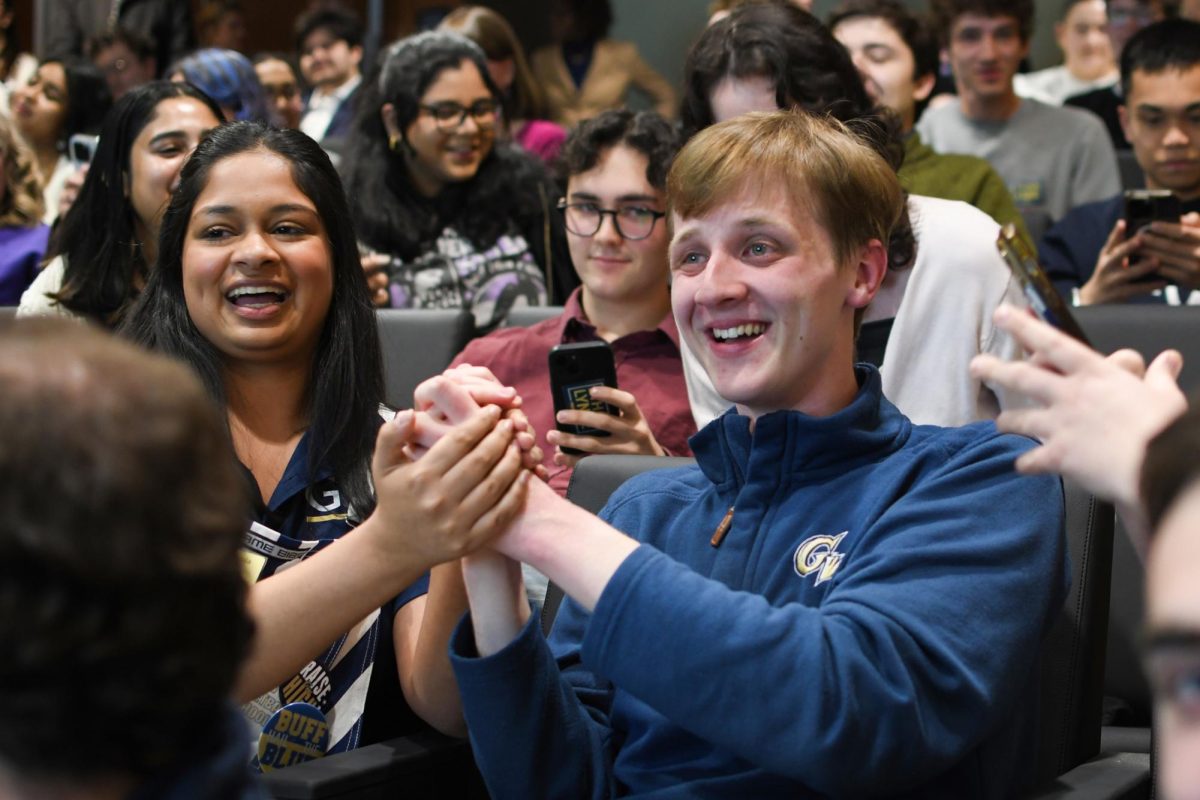Correction appended
The Columbian College of Arts and Sciences dean search got off the ground Wednesday when an elected faculty committee picked a professor to lead the six-month hunt.
A group of nine handpicked Columbian College faculty – led by philosophy professor Gail Weiss – will spend the year raking through candidates to head GW’s largest college, getting its start five months after Dean Peg Barratt announced she would step down next summer.
The next dean will step into a college that is more selective and research savvy than it was when Barratt arrived – but one with a scrutinized top position.
Committee spokesman James Clark said the committee has not yet outlined criteria for an ideal candidate, but it is looking for “strong interpersonal skills, a vision for the future and the ability to run a large and complex organization, among many other skills.”
The traits he pointed out matched some of the top concerns faculty expressed about Barratt in a school-wide survey last spring, which revealed widespread disenchantment with the five-year dean’s vision and leadership. A month later, Barratt announced she would step down and move into a teaching role.
But Forrest Maltzman, senior vice provost for academic affairs and planning, said the University officials will not pay much attention to faculty members’ perception of Barratt when they judge the next group of dean candidates.
“I don’t think the selection of the next dean has much to do at all with the current dean,” he said. “The selection of the next dean is where we’re trying to go forward.”
Provost Steven Lerman highlighted the need for the next dean to build momentum, because “Dean Barratt is passing on a college that is much stronger than she inherited.”
The list of qualifications that the 2007 Columbian College dean search committee laid out also includes traits like interpersonal skills and ability to communicate a vision. Clark said he hopes the committee will begin candidate interviews by early 2013, with Lerman and Knapp making the final call on the hire by the spring.
Barratt said that cultivating personal relationships is on the radar for her successor.
“Being a dean is a people job – the job calls for constantly working with faculty, students, alumni and staff,” she said, calling the essence of Columbian College “the intersection between students and faculty.”
Besides earning professors’ trust, the next dean will have a long to-do list, executing the strategic plan, overseeing GW’s first global undergraduate degree and facilitating the science departments’ move into the Science and Engineering Hall in 2015.
“This is one of the most important positions at GWU, and the new Dean will come to the university at a time when it is becoming even stronger than before,” Clark, the chair, said in an email.
The committee is also combing through consulting firms to help organize the search process. Vice Provost for Diversity and Inclusion Terri Reed will help guide the search to ensure a diverse field of prospects. Barratt is one of only three female deans at GW.
The committee includes three representatives from each division in the college – natural science, social sciences and humanities – elected earlier this month by the school’s faculty. The other eight search committee members did not return requests for comment.
One undergraduate and one graduate student will be added to the committee by next week, but neither will have voting powers.
Former University President Stephen Joel Trachtenberg, now a higher education consultant at Kory/Ferry International, said last month that the University will likely turn to an outsider from a high-ranking liberal arts school.
He pointed to his successor’s hires of administrators from higher ranked schools – like Lerman from the Massachusetts Institute of Technology and GW School of Business Dean Doug Guthrie from New York University – as hints to where GW to could turn next.
During Knapp’s administration, two-thirds of the hires for top administrative or academic positions have been external hires.
Cory Weinberg contributed to this report.
This article was updated Oct. 15, 2012 to reflect the following:






